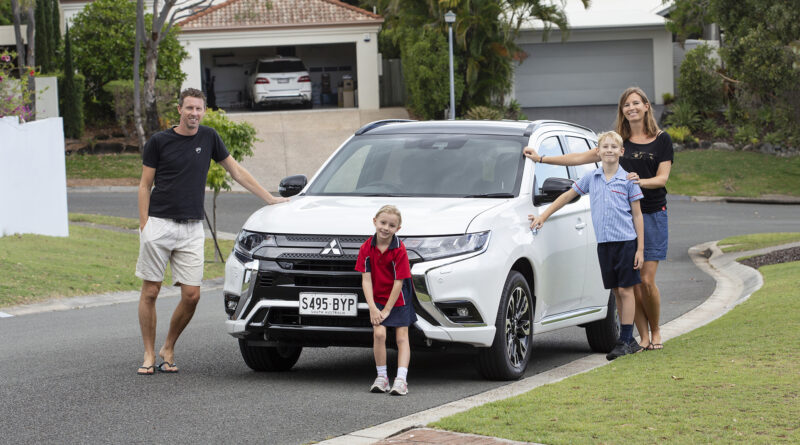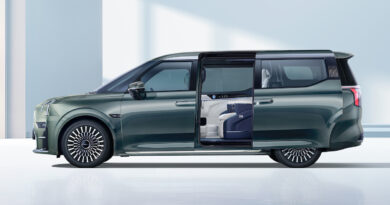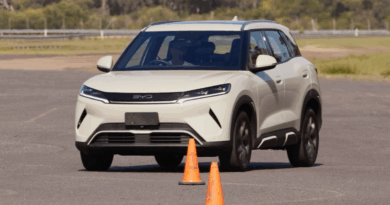Mitsubishi Outlander PHEV family review: the ideal entry to EV life?
Picture the scenario. You’re a family man or woman. You have a mortgage. Kids too, and they’re expensive. You expected your salary would be healthier at this point in your life. I hear you. I’m there too.
There’s this electric car revolution going on around you, and you’re keen to take part. Then you see a Tesla Model X costs $160K. A Mercedes-Benz EQC $140K. An Audi e-Tron $137K. A Tesla Model 3 may be almost $70K before charges and a Hyundai Kona Electric $60K, but how are you going to squeeze in the kids and all their baggage?
You need a family car, and as you’re Australian, it appears only a medium or large SUV will do. To rub it in, the above premium SUVs you see driving around typically have a sole grey-haired occupant on-board, and not a child, muddy sports kit, pram or bicycle to be seen. You sigh and realise the electric revolution isn’t aimed at normal folk.
Want the latest EV news and reviews delivered to your inbox? Subscribe to our weekly newsletter!
There is another way. And, for many buyers, it could be a smarter way. Plug-in hybrids are the inbetweener electrified cars. The Diet Coke versions. Some may think them a cop-out instead of committing to a full electric vehicle, but frankly, if the latter are restrictively expensive, what choice have you?
The twin-electric motor Mitsubishi Outlander PHEV has had the medium plug-in hybrid SUV market to itself since 2014, with the potential rival Ford Escape PHEV now delayed by a year until late 2021.
And you know what? With an all-electric range of 54 kilometres, the Outlander PHEV could be all the EV your daily life requires. After all, you’ve got a 2.4-litre petrol engine up front to offer around 500 more kilometres of driving range if needed, completely allaying the range anxiety suffered in full EVs.
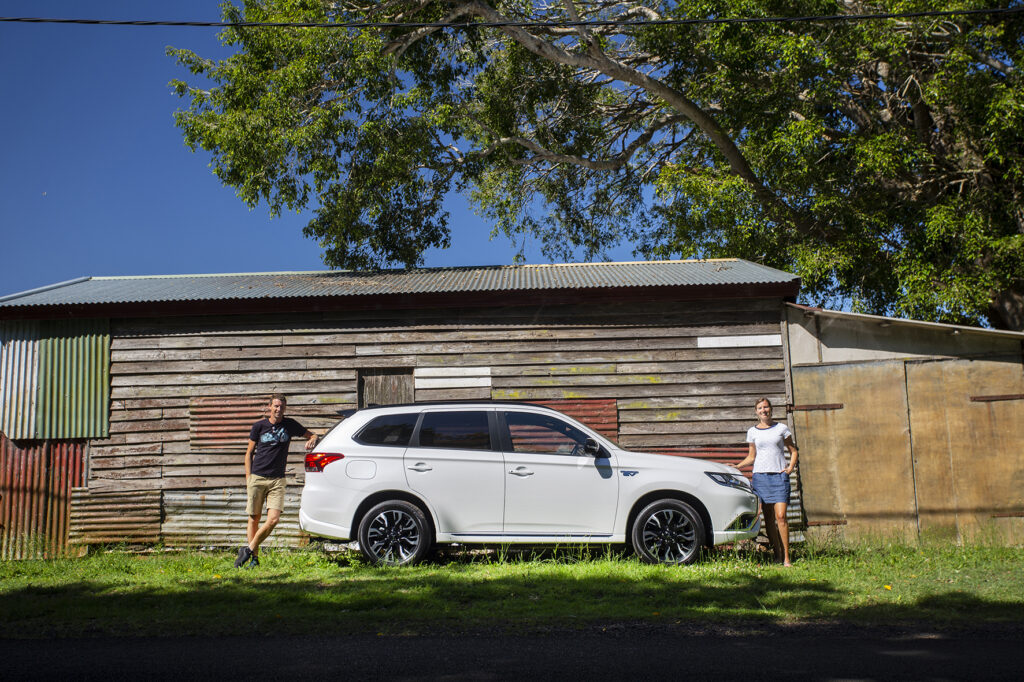
The Outlander PHEV everyday family test
Priced from $51,990 drive-away, the Mitsubishi Outlander PHEV’s within reach to a lot of everyday Australians needing the size and space for family life to happen. They even give you a ten-year warranty (eight-years for the hybrid battery) as a family budget-friendly sweet topping.
So, our family of four tried one on for size. A comprehensive review of the MY21 Outlander PHEV can be found here, so see this tale as a more first-hand account of family life with this SUV plug-in hybrid.
Much like most want from a family SUV, the PHEV blended into our busy, hectic lives with barely any fuss or adjustment on our part. The only change we implemented was needing to plug it in to the garage wall socket when we returned home.
As the Mitsubishi charger lived in the garage, it was simply a case of grabbing the plug and slotting it into the PHEV’s charge socket, located behind a fuel-filler-type flap on the right rear quarter. Easy. In fact, the kids enjoyed doing this so much I rarely had to do it myself, nor in our week of testing did I have to waste time at a petrol station. Overall, that’s a time win bonus for me.
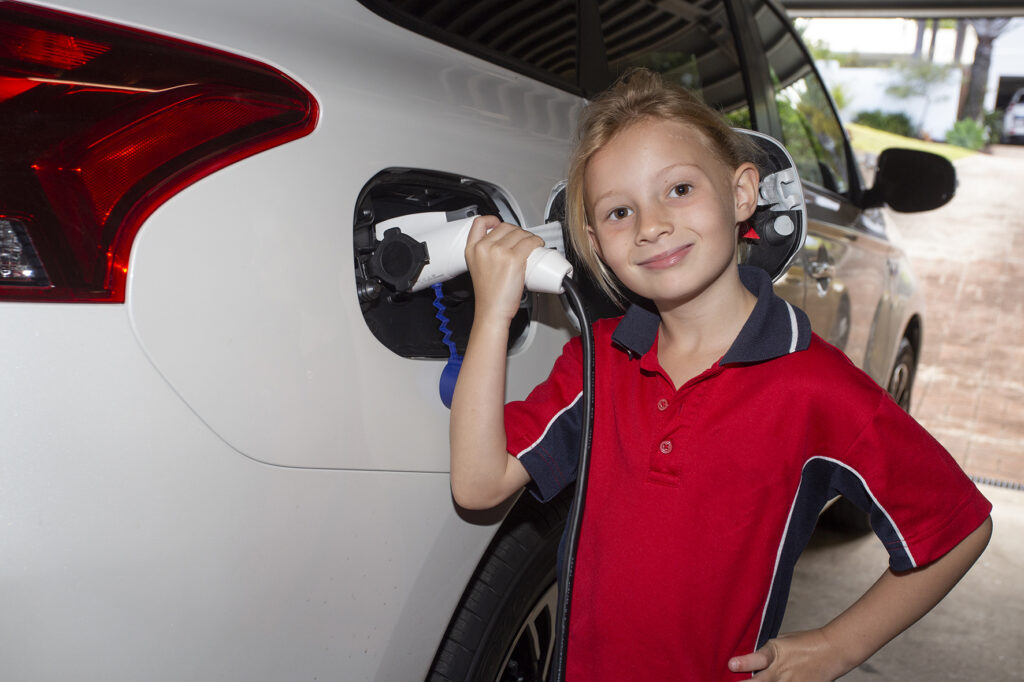
Speaking of wins, let’s talk about how much everyday pure electric range you really need. We’re all different, granted, but I refer back to some research BMW conducted in 2016 to justify its plug-in 330e sedan’s mere 37-kilometre pure electric range.
It found the average Australian commute was 15.6km. Apparently, 50% of us commute less than 10km. That means if you have an all-electric range of 54 kilometres – like the Outlander PHEV – the majority of us should be able to get to work and back using electric power only.
Electric car batteries weigh a lot. A hell of a lot. And though they can offer 500+ kilometres of pure electric driving range, travelling such distances just isn’t relevant to mums and dads dropping kids off to school before making the (usually) short commute to a place of work. In effect, many EV owners lug around all that extra battery weight unnecessarily. You may put 10-litres of water in your rucksack to do a 100km ultramarathon run, but you wouldn’t if you’re just walking to the shops.
As it proved for us. Our daily journey would start with the full 54-kilometre range showing as the PHEV had been plugged in overnight. Dropping the kids off to school lost 7km, then a trip to fetch some groceries another 5km. My wife ran a couple of other errands and returned home with 33km range remaining. Not once did the petrol engine start.
I took the PHEV to head to my office 10km away, so by the time I brought it home that night it showed 14km of range remaining. I plugged it into the garage wall socket and was told charging to full would take about seven hours. By the time the school run process began the next day, 100% battery charge was showing.
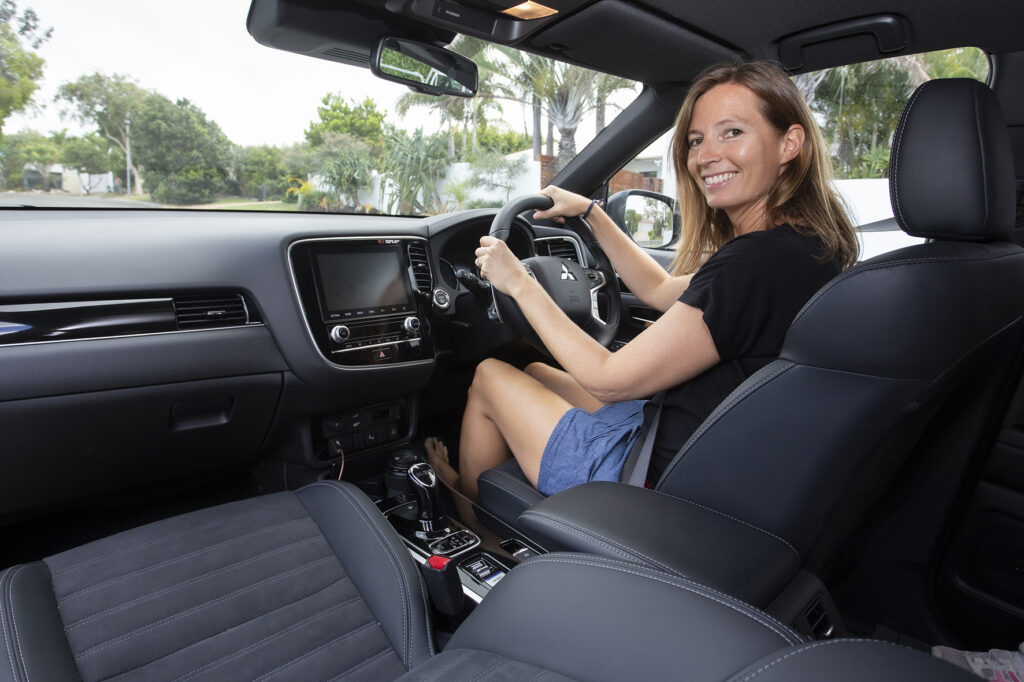
Calling for backup
Call us boring, but that’s our typical week. Much the same as plenty of Australians. Of course the weekends brought the need for travelling further afield, and here the Outlander PHEV’s petrol engine was called into action.
It’s a detuned version of the normal Outlander’s four-cylinder petrol, offering a rather tame 94kW and 199Nm. With the batteries exhausted this was our only power source on longer journeys, but for cruising the highway it proved relatively smooth, quiet and unfussed. Even the transition, shifting from electric power to petrol, was barely noticed.
Its lack of guts showed on hills (albeit quite steep ones on our test drive), where it had to noisily push the revs to haul us up the inclines. Our fuel use? An average of 6.7L/100km after I reset the computer when the battery charge ran out. Not bad at all for a medium SUV, although this journey was mainly highway. It crept closer to 10L/100km once we threw in some hills and country roads.
The Outlander PHEV can be DC fast charged just like an electric car, and with just a 13.8kWh battery, a 0-80% fill is knocked over in under half-an-hour when charging this way.
You’re able to use the petrol engine to recharge your electric batteries, or press a button to save battery life by optioning petrol engine only. This is ideal when cruising on the highway as this is when electric motors chew through battery life. Best to save what charge you have for the slow-moving stuff, like traffic jams or city life. While petrol or diesel cars are at their least efficient in these scenarios, an electric car is at its most.
The Outlander PHEV also has six levels of regenerative braking. Six seems excessive, as none are particularly forceful at arresting progress and harvesting charge back to the battery. That said, on a 6km downhill drive using maximum regeneration, we managed to buy ourselves an additional 4km of electric range.
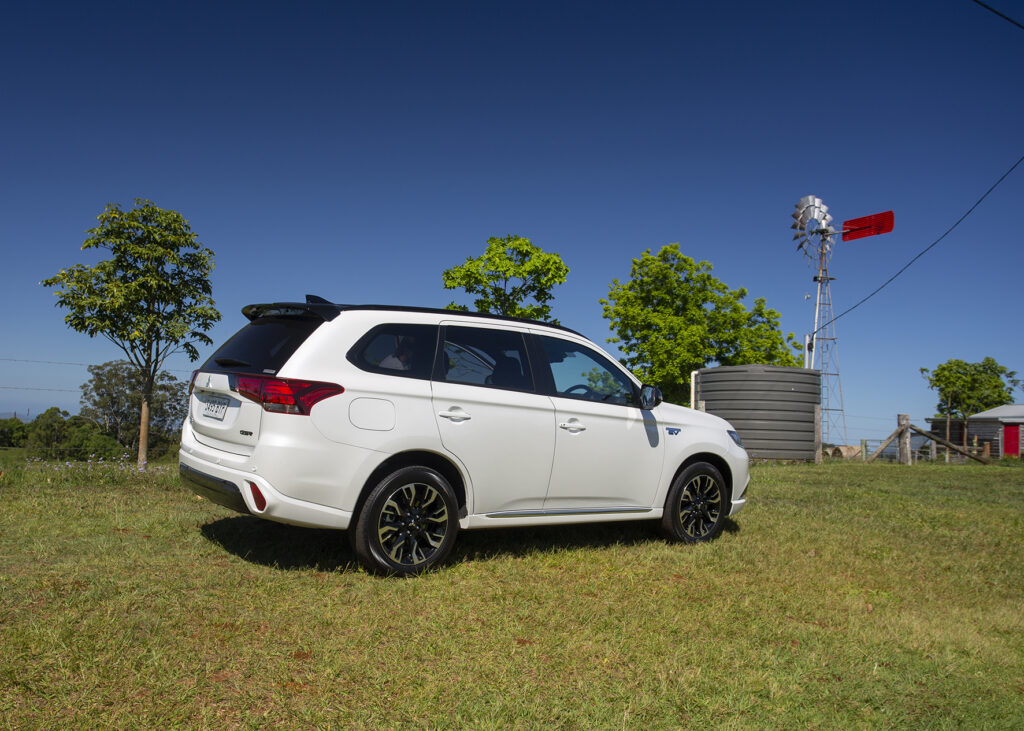
Room to move
Your conventional Mitsubishi Outlanders with petrol or diesel engines have the option of seven seats. The PHEVs can only offer five chairs as the batteries and a motor are under the rear floor, removing the chance of two extra seats, and a spare tyre. A repair kit is your compromise.
That said, the PHEV still offers almost 500-litres of boot space – more than a Mazda CX-5 or Hyundai Tucson, but less than a Toyota RAV4 Hybrid. It would swallow the bulk of the kids’ bags, sports kit and general detritus, but that lack of seven-seat option is a big negative to many who love those occasional seats.
The fact you can get a seven-seat 2WD Outlander with auto gearbox from $33,990 drive-away shows the premium to get into a PHEV (albeit the specification is better) is significant. Cheapest Outlander PHEV (all are AWD) is the ES for $51,990, then the GSR (as seen in our pictures) for $56,490, while a range-topping Exceed is $60,990. All prices include on-road charges.
The Outlander PHEV feels like a “large” medium SUV, especially when climbing into the back seats. There’s mighty head and leg room so our two kids had little to complain about, especially as those rear seats can recline to a relaxing angle. Rear air vents and USB ports back up the family-friendly nature.
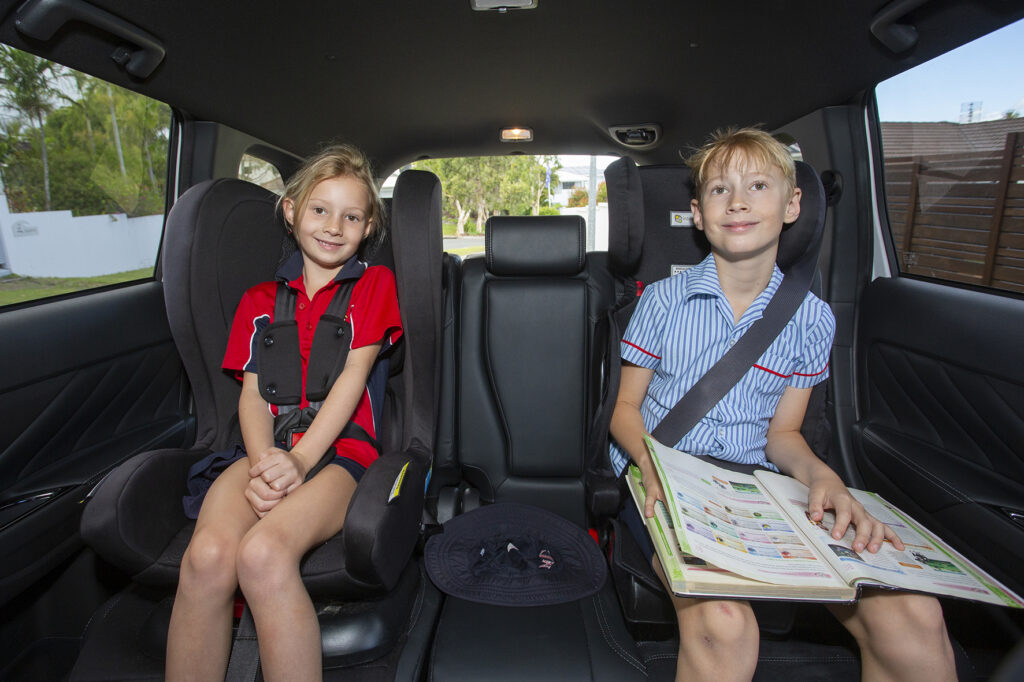
The overall drive experience is what I’d describe as comfortable but uninspiring, but for those on the school run or work commute, it’s the comfort bit that’s more important. The fact we were able to do practically every daily duty on electric power alone, while barely realising it, is testament to how easy it is to adapt to this PHEV technology.
Sure, you’re paying a good chunk more to move from a ‘normal’ Outlander into a PHEV version, but as we know, many buyers are prepared to invest more to embrace an eco driving experience, avoid fuel bills (if you have solar at home or your workplace) and simply enjoy the zippier, quieter drive experience offered by an electrified version.
A little sweetener is the Outlander PHEV being designed for bi-directional charging, meaning the car can feed electricity back into the grid, or even power your home. Great on paper, but be aware you’ll need to spend thousands more on charging hardware to make that happen.
As a final point, as with every EV or PHEV I’ve tested with my family, the kids seem more engaged with the electric technology and the emissions-free side of driving. Sure, they love a twin-turbo V8 experience too, but their interest is always piqued with a central screen showing if we’re travelling using electricity or unleaded, and how we can create more battery charge with regeneration.
Electric cars are very much their future, so if they can get pleasure, education and experience from vehicles such as the Outlander PHEV, it’s going to make the transition away from fossil fuels far easier for this next generation.

Mitsubishi Outlander GSR PHEV specifications
Price: $56,490 drive-away
Basics: PHEV, 5 seats, 5 doors, SUV, AWD
Range: 54km
Battery capacity: 13.8kWh
Battery warranty: 8 years/160,000km
Energy consumption: 16.1kWh/100km
Motors: 1 front 60kW and 1 rear 70kW
AC charging: 3.7kW, Type 1 plug
DC charging: 50kW, CHAdeMO plug
0-100km/h: NA

